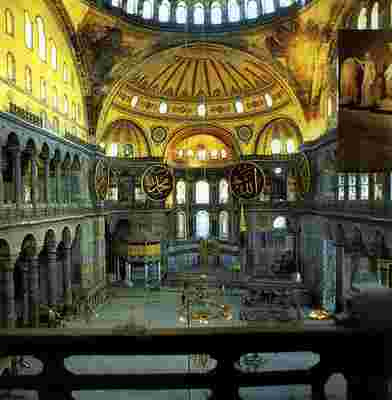Byzantium – The Forgotten Eastern Roman Empire
Gregory L. Jackson, Ph.D.
The Western Roman Empire began to decline rapidly after Alaric’s sack of Rome in 410 AD. The sack was not so terrible as everyone imagines. The shock to the civilized world came from Roman citizens no longer willing or able to defend the capital of Eternal Rome. Western Christianity had its bishop in Rome, so Christians were tempted to think God had abandoned His own headquarters. Augustine of Hippo wrote his classic City of God to argue that the true City of God is invisible, eternal, and built on the foundations of Christ, not man.
Roman civil officials began to abandon their posts and the Western Empire began to disintegrate into the countries we know as Europe in the coming centuries. In contrast, the Eastern Roman Empire grew in power and importance as the trading center of Europe, Asia, and Africa. This forgotten empire was already in existence before Constantine refashioned his New Rome about 300 AD.
Constantine was a military and political genius. He began his rise in England, with a famous general as a father. He fought his way to Rome to become one of the rulers and then consolidated his power until he alone ruled the entire empire, from England to the outskirts of India. However, he did not like the City of Rome and spent little time there. He made his new city in Byzantium and the building project became Constantinople. He rebuilt it almost overnight, importing Roman nobility with generous bribes of land and fortune. The City of Rome was largely pagan, but Constantine made his new city Christian.
Constantine was baptized as a Christian before his death. He considered himself Equal to the Apostles. His self-fashioned title became a job description of most emperors who followed him (except Julian the Apostate, who tried to reverse trends back to paganism). The Byzantine emperors were highly educated and the Eastern Empire followed their example in literacy and religious devotion. Although the Bishop of Rome tried to emphasize its power over all churches, the Archbishop of Constantinople led Eastern Orthodoxy. There were periods of cooperation but also extended times of mutual excommunication and warfare.
Constantinople was ideally situated for trade between Asia and Europe, with land routes in both directions and access to the Mediterranean Sea. The city also had abundant fresh water, fish, and natural defenses. The city became incredibly wealthy from trade. When Islam grew after the death of Mohammed in 632 AD, Constantinople served as a buffer between Islamic expansion and Europe. Although Byzantium worked with the Ottoman (Moslem) Empire, renting its warriors when needed, the city also tempted the Islamic leaders to capture it, for its wealth and religious symbolism.
Islam whittled away at Byzantium for centuries until Constantinople became a dispirited island in the midst of Moslem forts and armies. Finally the city fell on May 29, 1453, a day of doom still remembered throughout Eastern Orthodoxy. For the Greek Orthodox, Russian Orthodox, Serbian Orthodox, and other Eastern rites, Constantinople was their religious capital and treasure-house of religious icons, including the True Cross.
Byzantium continued as a Christian empire for eleven centuries, a remarkable achievement. The empire was highly educated and skilled in the arts. They preserved the New Testament in the original Greek and the archives of classical literature. The Moslems often transmitted these masterpieces to Europe, but the main center of learning was Constantinople and other Byzantine cities.
Militarily, the Eastern Empire was not appreciated until it fell. Then the Islamic armies moved on Europe and extended their rule into Europe until 1683, when they were turned back for good at Vienna. The Ottoman Empire peaked after its capture of Constantinople, but the disintegration of their rule was slow, like that of Rome and Byzantium. The Ottoman Empire became the “sick old man” of Europe before World War I and exists today only as Turkey. Constantinople became Istanbul because the victors transformed the Greek for “into the city” as Istanbul.
Some contributions of the Byzantine Empire are:
1. They kept the Islamic armies at bay when Europe was young and weak.
2. They hosted the successful First Crusade, which took Jerusalem back from Islam and established a Christian kingdom there for some years.
3. They were the religious and cultural center of the world for more than a thousand years.
4. They served as a central point for world trade.
No one can do justice to this empire in a few pages, or even in a few volumes. However, we should remember that the last emperor of Byzantium died fighting for his city, his country, his culture. His name was also Constantine.



No comments:
Post a Comment